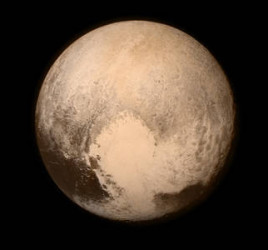
Sirius the Dog Star
The Dog Days of Summer
The word Sirius is Latin for “scorching” derived from the Greek name. From Cairo, in August, the Sun is about 15 degrees north of the equator and Sirius is 15 degrees south of the equator. The heliacal rising of Sirius, namely the day it becomes visible just before sunrise after moving far enough away from the glare of the Sun. This marks the beginning of the Dog days of summer. The Sun moves about 1 degree per day to the East against the background stars thus Sirius would be visible just before sunrise slowly rising higher in the sky each day beginning the Dog days. This was also the period when the Nile River would annually flood its banks.
Brightest Star in the Night Sky
The brightest star in the night time sky is Sirius. Just after sunset, as darkness descends, Sirius at -1.46 magnitude is the brightest star high in the Hawaiian sky. To locate Sirius use the three belt stars of Orion from west to east and continue eastward to the brightest star – Sirius. An easily recognized pattern of a perfect equilateral triangle are formed by the stars Sirius, Procyon in Canis Minor, and Betelgeuse in Orion, the “winter triangle”.
In 2015, Jupiter in the east and Venus in the west are much brighter, but those are planets. Sirius marks the dog tag location in Canis Major, Orion’s companion, the large hunting dog. Physically, Sirius is 8.6 light years away and has 2.02 times the mass of our Sun. It is 1.7 times the diameter of the Sun and has a temperature of 9,940 degrees Kelvin.
1 Billion Years
Estimates are that this star is about 200 to 300 million years old. There is a rule of thumb for lifetime of a star: 2x the mass, 1/10th the life. Our sun is expected to live at least 10 billion years total. That puts Sirius at a total life of 1 billion years. Small stars such as these end their lives as Planetary nebula and eventually white dwarfs. They do not have the mass to explode as super novae.

The image at the top of the page of Sirius A and Sirius B was taken by the Hubble Space Telescope. The white dwarf can be seen to the lower left. The diffraction spikes and concentric rings are instrumental effects. Credit: NASA, ESA, H. Bond (STScI), and M. Barstow (University of Leicester) – http://www.spacetelescope.org/images/html/heic0516a.html



